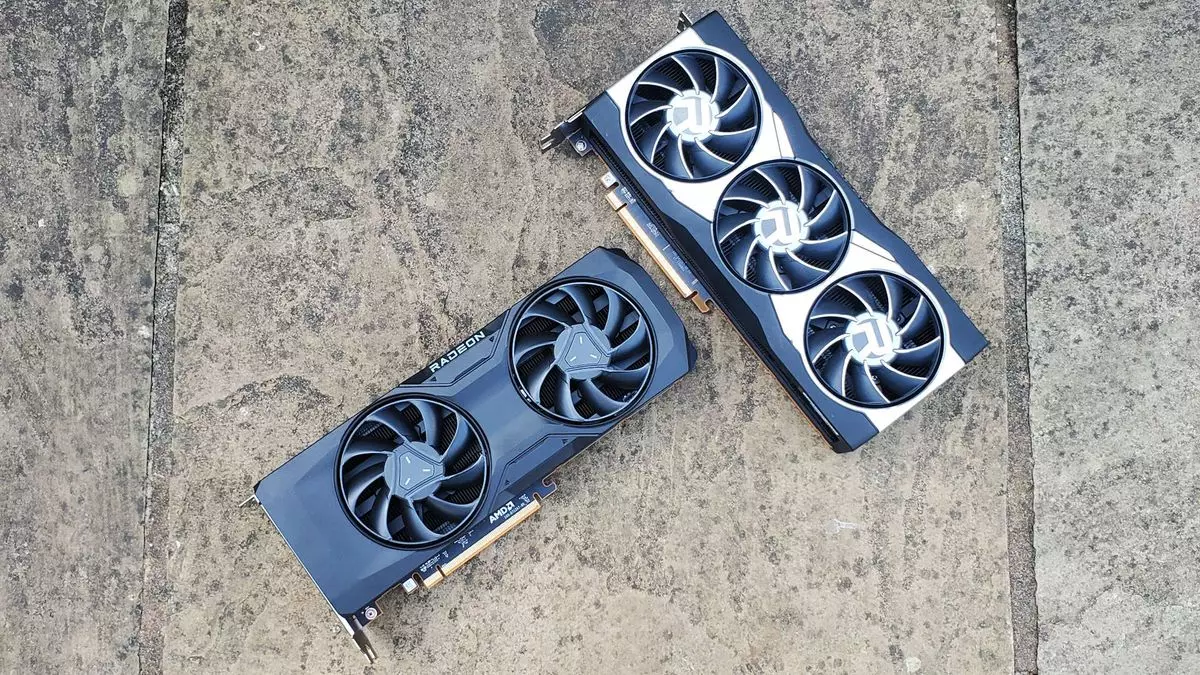AMD’s Fluid Motion Frames (AFMF) technology has made significant progress since its initial debut. Originally limited to just two games, Forspoken and Immortals of Aveum, AMD has recently released a preview driver that extends support to a broader range of games. With this driver, Fluid Motion Frames can now be enabled not only on RX 7000-series GPUs but also on RX 6000-series GPUs. Furthermore, the technology is compatible with both DirectX 11 and DirectX 12 games, spanning over a decade of gaming experiences.
The expanded support for Fluid Motion Frames is a testament to AMD’s commitment to improving gaming experiences for its users. By enabling this technology in older games, AMD allows its owners to enjoy a performance uplift without having to upgrade their hardware. Even users with competing GPUs, such as the GTX 1060, can benefit from the advantages of Fluid Motion Frames. This move by AMD might inadvertently discourage users from investing in new graphics cards, as the technology offers a significant improvement in frame rates across a wide range of games.
Fluid Motion Frames is an integral part of AMD’s frame generation technology, known as FSR 3. Its primary purpose is to enhance frame rates in games, particularly in challenging settings like high resolutions and demanding ray tracing environments. While it has the potential to boost performance, it’s essential to consider the trade-offs. Frame generation can increase latencies, which AMD addresses by introducing its revised Anti-Lag+ technology. It is important to note that enabling Fluid Motion Frames is not recommended when frame rates are low, as it can exacerbate already high latencies.
To ensure a smooth gaming experience, AMD provides guidelines for enabling Fluid Motion Frames. The company recommends enabling AFMF only for games that maintain a minimum frame rate of 55 FPS on 1080p displays and 70 FPS for 1440p or higher resolution displays. This allows users to strike a balance between performance enhancement and latency management. By setting these limits, AMD aims to optimize the benefits of Fluid Motion Frames without compromising overall gameplay quality.
Although the preview driver extends support for Fluid Motion Frames, it is important to note that it is labeled as a Technical Preview. This designation implies that the driver is not yet ready for a wider public release. However, for tech-savvy gamers who enjoy experimenting with GPU settings and are willing to tolerate potential bugs, this preview driver provides a sneak peek into the future of AMD’s frame generation technology.
AMD’s Fluid Motion Frames technology has come a long way since its limited debut. With the recent preview driver release, AMD has extended its support to a wide range of games and GPUs. By enabling Fluid Motion Frames on older titles, AMD offers users a performance uplift without requiring a hardware upgrade. However, it’s crucial to consider the limitations and recommendations provided by AMD to ensure an optimal gaming experience. As the technology continues to evolve, it will be exciting to see how AMD further refines and expands its frame generation capabilities.


Leave a Reply